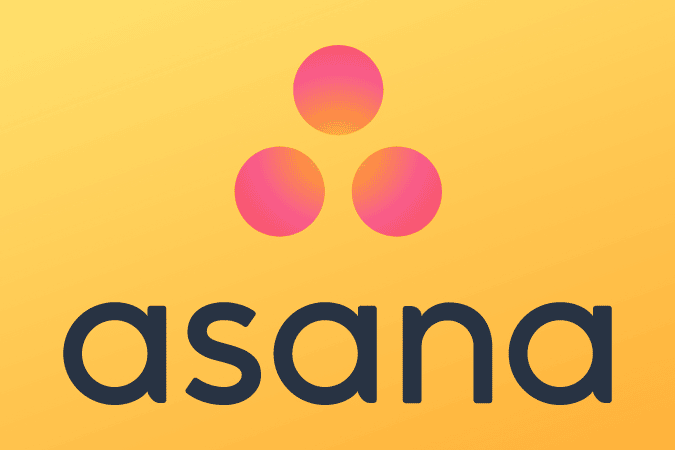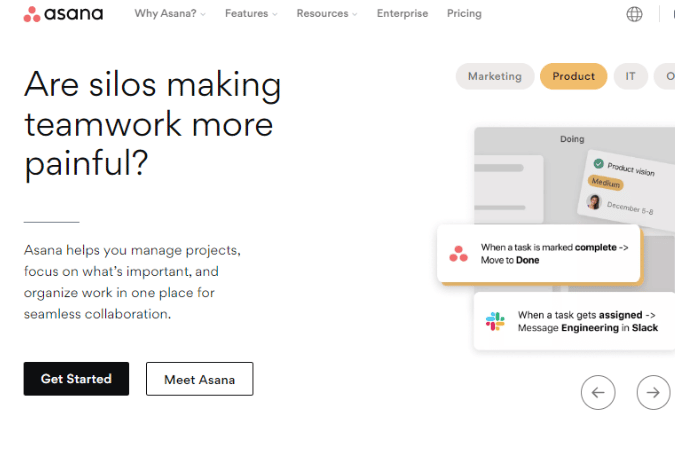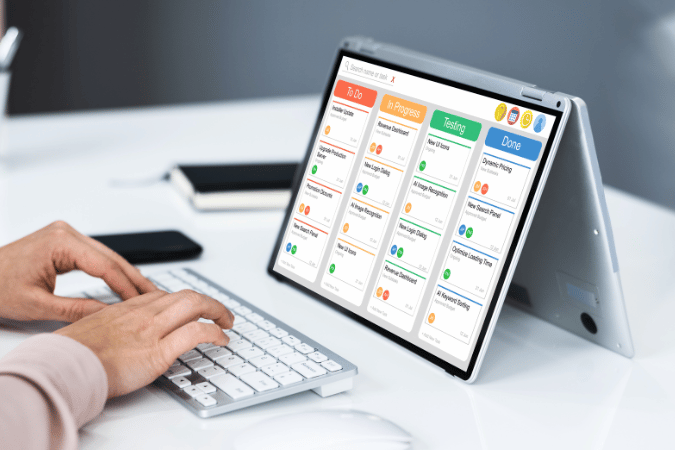
How Freelancers Can Leverage Asana Project Management

Are you a freelancer looking for an easy, robust platform to manage your tasks? Asana is the go-to choice among many professionals. It offers an intuitive interface, powerful task management features, automation tools, and team collaboration capabilities, allowing freelancers to stay on top of multiple projects. This tutorial discusses how you can use Asana’s features to keep track of your workflows and streamline your process effectively. So without further ado, let’s dive in!
Asana Project Management Software: An Overview For Freelancers
Asana is a comprehensive project management software that helps freelancers stay organized and on track. It enables users to easily track tasks, projects, assignees, and deadlines in one place. This software allows freelancers to manage their workflows and increase productivity quickly. Below are some of the critical features of Asana and how it can help streamline your workflow as a freelancer.
Task Management
Asana’s task system allows users to set up tasks for themselves or assign tasks to team members quickly and easily. It facilitates communication between project members by enabling them to comment on charges or ask questions directly within the study. Additionally, each task can have its due date, so everything stays on schedule.
Project Management Tools
Asana also can organize and create projects into folders or lists so that you can keep track of what needs to be done without becoming overwhelmed by all of your tasks at once. This feature allows you to break down complex projects into smaller chunks and monitor progress more efficiently. You can also create custom labels for different tasks or assignees so that you can view the information in a way that works best for you.
Reporting And Analytics
Asana also provides reporting and analytics tools that allow users to track progress over time and measure performance metrics such as task completion rate or active hours spent working on a project. This gives users insight into how their teams perform and where improvements must be made to maximize efficiency and productivity. You can generate reports in real time, making it easy for freelancers to stay up-to-date with the latest data about their projects.
Asana is a potent project management tool designed specifically for freelancers who need help staying organized and on top of their workflows. With features such as task management, project organization, reporting, and analytics tools, it is easy to see why so many people rely on Asana for all their project management needs.
Setting Up an Asana Account

Have you ever wished there was an easier way to manage projects, tasks, and to-dos? If so, Asana might be the perfect solution for you. Asana is a powerful project management tool that makes it easy to keep track of all your tasks in one place. Let us walk you through setting up an account on Asana in five simple steps.
1. Visit the Signup Page
The first step is to visit the Asana signup page on their website. This is where you will create your account and begin using Asana. You can sign up with a current email address or create a new one for use with Asana.
2. Enter Your Details
Once on the signup page, enter your name, email address, and a strong password into the fields provided and click “Sign Up.” If you already have a Google or Office 365 account, you can sign up with those credentials instead.
3. Choose Your Plan
Next, choose which plan best suits your needs by selecting either the free version (for individuals) or one of the paid plans (for teams). The free version includes basic features like task creation and collaboration tools, while the paid plans offer additional features, such as project templates and advanced reporting tools.
4. Create Your Team
If you choose a paid plan, it’s time to start creating your team! Go to edit team settings here; You can add a team member by entering his name and email address into the provided fields. Once all members have been added, they can join your team via an invitation link sent directly from Asana.
5. Get Started!
Now that everything is set up correctly, it’s time to start using Asana! First, take some time to familiarize yourself with the platform’s features by exploring its many options and settings. Then, once you understand everything, start creating tasks or assigning them to other team members as needed!
Setting up an account on Asana doesn’t have to be complicated—as long as you follow our five simple steps outlined above! From signing up for a plan to inviting team members and getting started using the platform’s features, this guide should make setting up your account a breeze. So what are you waiting for? Get started today!
How to Set Up Asana for Task Management?

Asana is an excellent tool for task management, but it can be a little daunting to set up if you’re unfamiliar with it. This seven-step guide will help you start with Asana so you can start managing your tasks like a pro!
1. Create an Account
The first step is to create an account. You can do this by visiting the Asana website and clicking the “Create an account” button. Once you have entered your information and clicked on the “Create account” button, you will be taken to your dashboard.
2. Add Your Tasks
Once you are on your dashboard, you will see a section called “Create Project.” This is where you will create tasks. To do your first project, click the “Add task” button and enter the project name, due date, and other relevant information. Once you have added all of your tasks, you can begin working on them.
3. Organize Your Tasks
Asana makes it easy to organize your tasks so that you can work on them more efficiently. To do this, click the “Organize” button and drag and drop your charges into the appropriate columns. For example, you may want to create a column for jobs due soon and another column for functions not as owing quickly. Once you have organized your studies, you can begin working on them.
4. Check Off Completed Tasks
As you complete tasks, be sure to check them off so that you can keep track of your progress. To do this, click the checkbox next to the task name. Once your tasks are completed, you will see a message saying, “All done! Good work.”
5. Add Notes and Files
If you need to add notes or files to a task, click the “Add notes & files” button and select the appropriate file from your computer. You can also type notes into the “Add notes” box.
6. Assign Tasks to Other People
If you need to assign a task to someone else, click the “Assign” button and select the person who should complete the job from the drop-down menu. You can also add a due date for the job by clicking on the “Add due date” button.
7. Track Your Progress
Asana makes it easy to track your progress so that you can stay on top of your tasks. To do this, click the “Track” button and select how often you want to receive job updates. For example, you may like to receive daily or weekly updates. Once you have chosen how often you wish to receive updates, Asana will send them to you automatically.
Asana is an excellent tool for task management, but it can be a little daunting to set up if you’re unfamiliar with it. This seven-step guide will help you start with Asana so you can start managing your tasks like a pro! By following these simple steps, you can take control of your workflow in no time!
Tips and Tricks For Using Asana Effectively

Asana is an essential tool for productive project management. Its user-friendly interface, robust features, and intuitive design make it the perfect choice for individuals, teams, and companies of all sizes. But with so many features and functions to explore, it cannot be easy to uncover its full potential. So let’s look at eight tips and tricks to help you get the most out of Asana.
1. Create a Master Project:
A master project is like a filing cabinet for all your projects; it helps you organize your tasks by categorizing them into different folders. This way, you can easily find what you’re looking for without searching through countless projects.
2. Utilize Sections & Custom Fields:
Sections and custom fields are fantastic ways to organize tasks into categories or prioritize according to importance quickly. For example, you could create sections for each job, such as “To Do” or “In Progress,” and custom fields that contain information like due dates or priority levels.
3. Use Dependencies & Predecessors:
If one task relies on another to be completed effectively, use dependencies or predecessors to establish that relationship between functions within your project in Asana. This also helps with time management since parts can’t be worked on until their predecessors are finished first!
4. Automate Repetitive Tasks:
With Asana’s automation feature, you can create rules that automatically trigger actions when certain conditions are met – such as sending notifications when a task is added or due date reminders before deadlines approach. This takes some of the manual labor out of managing projects while also helping ensure nothing falls through the cracks!
5. Create Templates & Workflows:
If certain types of tasks consistently appear within your projects, save yourself time by creating templates and workflows instead of having to recreate them every time from scratch! You can also share these templates with team members so everyone is on the same page regarding getting work done quickly and efficiently!
6. Set Up Reminders & Notifications:
Don’t let important tasks slip through the cracks – set up reminders and notifications to stay informed about upcoming deadlines or changes within your project! These notifications can be sent via email or text, making staying on top of things more accessible than ever!
7. Establish Rules & Guidelines:
From the start, establishing clear rules and guidelines helps keep everyone accountable and ensures everyone is working towards achieving common goals! This also prevents miscommunication since expectations have already been set early in the process!
8. Integrate Third-Party Apps & Services:
One way to maximize productivity with Asana is by integrating third-party apps, such as Slack, Dropbox, Google Drive, etc., into your workflow so everything is connected within one central hub! This makes it easy for team members who may use different services/tools but need access to shared resources!
Using Asana properly requires some practice, but once you get used to its interface, it becomes second nature – like riding a bike! By following these eight tips outlined above, you should have no problem getting the most out of this powerful project management tool and taking your productivity levels sky-high! So go ahead; try it today and watch how much faster (and more efficiently!) you achieve results with Asana at hand!
The Benefits of Using Asana for Freelancers

Asana is an invaluable tool for freelancers. It can help you manage tasks and projects, collaborate with clients and team members, stay organized and focused on the task at hand, and keep everything running smoothly. Here’s how using Asana as a freelancer can benefit your business:
1. Time Management –
One of the most significant benefits of using Asana as a freelancer is that it can help you stay on top of deadlines and tasks. Asana allows you to easily assign tasks, set due dates, and track progress so that nothing falls through the cracks. This makes it much easier to stay organized and focused on what needs to be done and when.
2. Collaboration –
Asana makes it easy for freelancers to collaborate with clients, team members, and other stakeholders. You can create tasks, assign them to the appropriate people, comment on progress updates, and constantly communicate within Asana’s platform. This streamlines collaboration and ensures that everyone is on the same page.
3. Workflow Automation –
Asana lets you set up rules and automation to help streamline your workflow even further. This automation allows tasks to be created, assigned, and completed without manual intervention. This automation can be a huge time saver for busy freelancers managing multiple projects simultaneously.
4. Analytics –
Asana also offers analytics, which can help you track your progress and measure the success of projects. You can easily see how tasks and milestones are progressing, identify any bottlenecks in the process, and adjust your workflow accordingly. This ensures that all of your projects stay on track and run smoothly.
5. Task Management –
Asana’s robust task management system makes organizing and prioritizing critical tasks easy. You can easily break down projects into smaller tasks, assign deadlines, track progress, and manage multiple projects simultaneously. This ensures that everything is completed promptly and there are no surprises along the way.
6. Search & Filtering –
Asana also makes searching and filtering tasks easy to find what you want quickly. This saves time and helps ensure that the proper job gets done first.
7. Reminders –
Asana also sends email reminders when specific deadlines must complete tasks. This helps ensure you don’t forget essential tasks or miss deadlines.
8. Integrations –
Asana integrates with many popular tools such as Slack, Dropbox, Google Drive, and others. This makes it easy to move files between services, collaborate on projects more efficiently, and manage your tools within one platform.
9. Accessibility –
Asana also allows you to access your tasks and projects from anywhere, anytime. This makes it much easier for freelancers who must stay on top of their work even when on the go.
10. Team Management –
Asana can also be used to manage teams of freelancers. You can assign tasks, delegate responsibilities, and keep everyone organized and on the same page.
11. Customization –
Asana also offers a variety of customization options so that you can customize your workflow to fit your specific needs. This ensures that you get the most out of Asana for your business.
12. Security –
Asana also provides a secure platform to store and manage your data. This means all your information is safe and secure, minimizing the risk of data breaches or other security issues.
Using Asana as a freelancer can help you stay organized, manage tasks efficiently, collaborate with clients, and keep everything running smoothly. It’s a great tool to help you stay on top of your projects and ensure everything runs smoothly. Try it out today to see how Asana can streamline your workflow!
How are Freelancers Using Asana to Manage their Work?

As a freelancer, having a system in place to ensure that your work is organized and managed correctly can go a long way in helping you succeed. One of the most popular project management tools today is Asana. This tool allows users to track their progress, collaborate with others, and stay organized. Here are five examples of how other freelancers use Asana to manage their work.
1. Creating Projects & Subtasks
The first thing many freelancers do when setting up their projects in Asana is created projects and subtasks for each assignment. This helps them keep track of what tasks need to be done and when they should be completed. It also makes it easier for them to break down larger tasks into smaller ones, which can help make the entire process more manageable.
2. Setting Up Custom Notifications
Another great feature of Asana is the ability to set up custom notifications for individual tasks or projects. This allows freelancers to stay on top of their deadlines and ensures they never miss an important event or meeting related to their projects.
3. Using Templates & Workflows
Many freelance professionals find that creating templates or workflows in Asana can save them time while managing multiple projects simultaneously. Templates allow users to quickly create similar projects with just a few clicks and workflows, allowing users to visualize what needs to be done next without manually entering every step into the system.
4. Adding Notes & Attachments
For any project, freelancers often need additional information or notes about specific tasks or clients. With Asana, users can easily add messages and attachments directly within each lesson so that everyone on the team can access all relevant information anytime.
5. Integrating with Other Apps
Finally, one of the most significant benefits of using Asana is its integration with other apps, such as Google Drive and Dropbox, making it much easier for freelancers who use multiple tools to manage their workflows and data storage needs simultaneously.
All in all, these five examples provide valuable insight into how other freelancers effectively leverage Asana for successful project management purposes. From creating projects and subtasks to integrating with other apps, there are countless ways that this powerful platform can help make life easier for busy freelancers everywhere! So, if you’re looking for an efficient way to manage your workload more effectively, consider trying Asana!
FAQs
1. What features does Asana offer?
Asana offers several features to help teams collaborate, including task management, team calendars, project timelines, Gantt charts, file sharing and storage, automated notifications and reminders, discussion forums, custom fields for tracking data points, and more. Additionally, Asana integrates with many popular third-party apps like Google Drive, Dropbox, Microsoft Teams, Slack, Zoom, and Salesforce.
2. How does Asana help teams manage their projects?
Asana helps teams manage projects by providing powerful task management features that allow users to create tasks, assign responsibilities, set deadlines, and track progress. It also enables users to collaborate by creating shared workspaces, setting up discussion forums, and managing projects from a centralized dashboard. Additionally, Asana’Asana’sct analytics allow teams to measure the effectiveness of their work and make data-driven decisions.
3. Does Asana offer a free trial?
Yes, Asana offers a 14-day free trial for new users. During this time, you’ll have access to Asana Project Management, including unlimited tasks and projects, unlimited workspaces, and integration with third-party apps.
4. How much does Asana cost?
Asana offers a variety of pricing plans for teams of all sizes. The Basic goal is free and includes access to most features, while the Premium and Business plans offer additional features like resource management and advanced security options. Prices start at $10 per user per month for the Premium plan and $24.99 for the Business plan.
5. Does Asana integrate with other tools?
Yes, Asana integrates with various third-party apps and services, including Google Drive, Dropbox, Microsoft Teams, Slack, Zoom, Salesforce, and more. Additionally, Asana has an API allowing developers to build custom integrations for their projects.
Final Thoughts on Asana Project Management
We have discussed many aspects of using Asana Project Management. You learned about the advantages it can provide to freelancers who choose to use it and tips and tricks for setting up and optimizing their accounts. We also looked at how freelancers can make the most out of this powerful software and integrate them into their existing workflow.
Taking advantage of Asana’Asana’sful features allows freelancers to simplify their task management and free up their time for more important matters. For those unsure about what to pick in terms of project management software, Asana is an excellent choice.
We hope that you have found this helpful tutorial inspiring. If you have any further questions or want more information, please get in touch with us with your queries. To see how else you can optimize your workflow as a freelancer, read our other blogs that advise on productivity techniques and managing client relationships!





